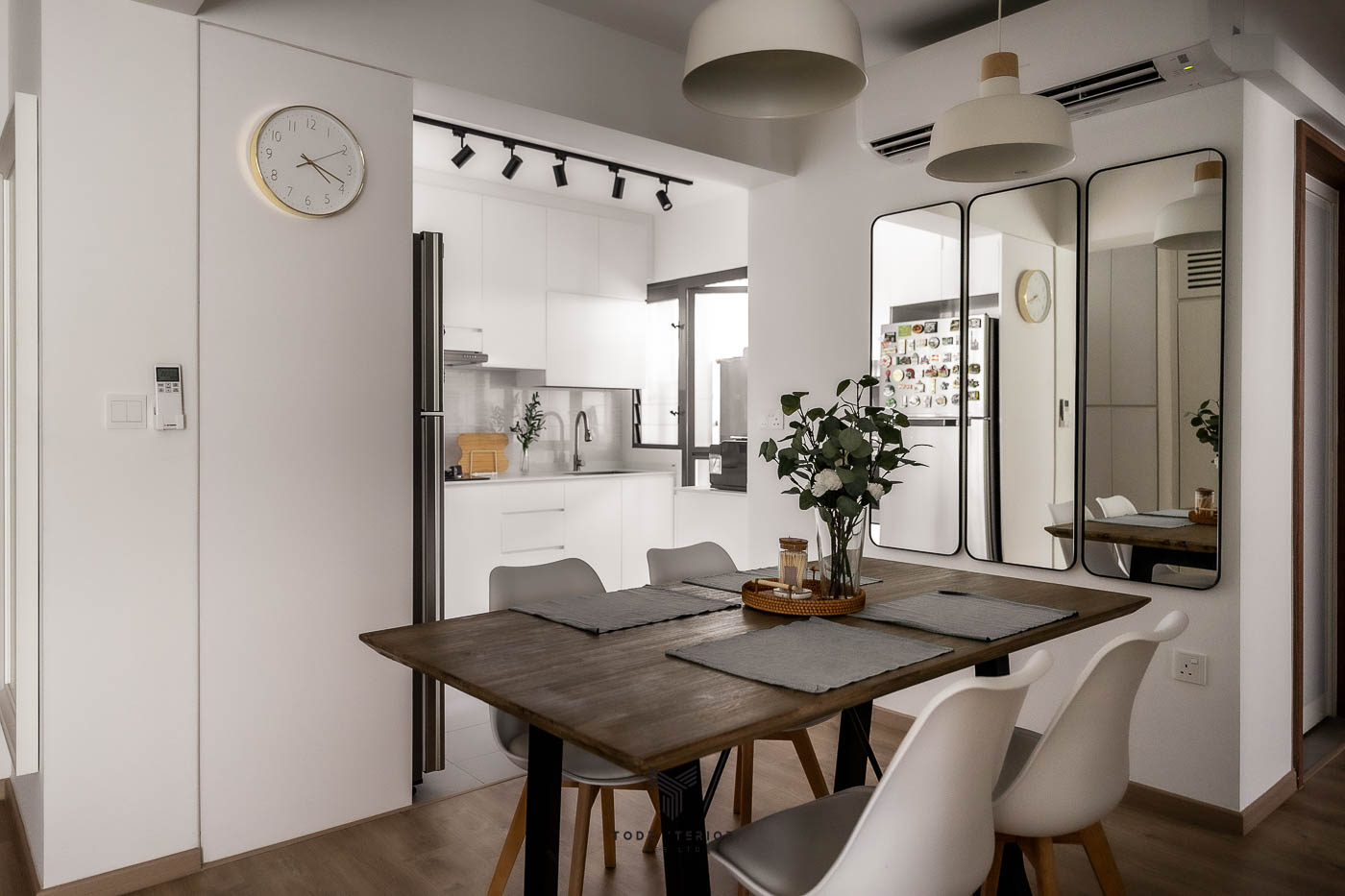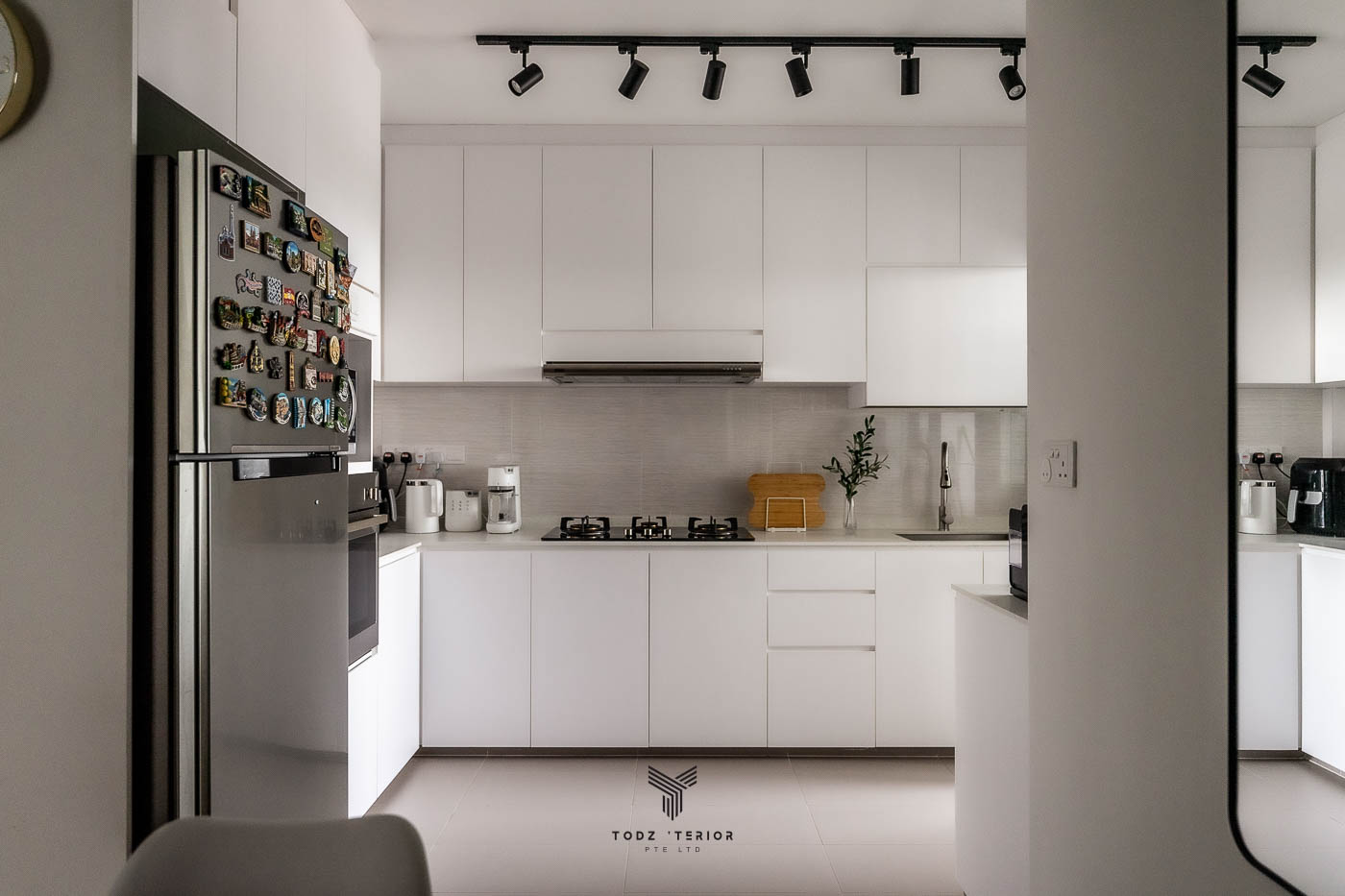Discover the allure of contemporary house design in Singapore and how it is transforming modern living. With its sleek lines, minimalist aesthetic, and cutting-edge architectural solutions, contemporary house design is redefining the concept of urban homes. But what makes it so captivating? What are the innovative approaches and sustainable design practices behind these stunning residential buildings? Let’s dive into the world of modern home architecture in Singapore and explore the aesthetics that are shaping the future of urban living.
In This Article
Toggle
Key Takeaways:
- Contemporary house design in Singapore embraces sleek lines, minimalist aesthetics, and cutting-edge architectural solutions.
- Singaporean house design has evolved from traditional colonial influences to a harmonious blend of modern and traditional elements.
- Aesthetic considerations in contemporary house design focus on functionality and beauty in creating stylish and practical living spaces.
- Innovative approaches to urban living include smart homes and multi-functional spaces that maximize limited square footage.
- Sustainable design practices in Singapore incorporate eco-friendly materials and energy-efficient solutions for a greener living environment.
The Evolution of House Design in Singapore
The evolution of house design in Singapore is a testament to the city-state’s rich history and diverse cultural influences. With a fusion of colonial architecture and traditional design elements, Singaporean houses showcase a unique blend of old-world charm and contemporary innovation.
How can I renovate my home without having to spend all my time and energy on it?
Colonial Influences and Traditional Architecture
During the era of British colonial rule, European architectural styles began to make their mark on Singapore. This resulted in the integration of traditional Malay, Chinese, and Indian architectural elements with Western design concepts. The fusion of different cultural influences gave birth to a distinct architectural style that is still celebrated today.
The colonial influences in Singaporean house design can be observed in the use of features such as ornate facades, shuttered windows, and spacious verandas. These elements not only add a touch of elegance but also provide practical solutions to the tropical climate, allowing for natural ventilation and shade.
Alongside colonial influences, traditional architecture plays a significant role in shaping house design in Singapore. Malay houses, known as “kampungs,” are characterized by raised stilts, pitched roofs, and traditional craftsmanship. Chinese houses often feature intricate woodwork, ornate carvings, and courtyard layouts, reflecting the principles of Feng Shui. Indian houses, on the other hand, embrace vibrant colors, intricate patterns, and the concept of interconnected spaces.
Modern architects in Singapore have managed to preserve and incorporate these traditional architectural elements into contemporary house designs, creating homes that pay homage to the city-state’s cultural heritage while embracing the demands of modern living.
The interiors of Singaporean houses are a testament to the city-state’s multiculturalism and diversity. Combining the sleek elegance of modern minimalism with the warmth of traditional materials and furnishings, Singapore home interiors exude a sense of harmony and balance.
| Traditional Architecture Elements | Colonial Influences |
|---|---|
| Ornate facades | Shuttered windows |
| Pitched roofs | Spacious verandas |
| Raised stilts | |
| Intricate woodwork | |
| Vibrant colors | |
| Interconnected spaces |
Challenges in Urban Living
Urban living in Singapore presents unique challenges due to limited space and high population density. With limited land available for development, builders and architects have to be innovative in their approach to house design. Minimalist house construction has gained popularity as a way to maximize space and create efficient living environments. The compact nature of contemporary house design in Singapore allows for functional and stylish homes even in densely populated areas.

The Rise of Contemporary House Design
The rise of contemporary house design in Singapore can be attributed to the work of influential architects and the development of iconic structures. Prominent architects like Kerry Hill, Chan Soo Khian, and SCDA Architects have made significant contributions to the field, creating innovative and visually striking house designs.
Prominent Architects: Kerry Hill, Chan Soo Khian, SCDA Architects
Landmark structures such as the Reflections at Keppel Bay and The Interlace have set new standards for luxury residential architecture in Singapore.
Iconic Structures:
| Structure | Architect |
|---|---|
| Reflections at Keppel Bay | Daniel Libeskind |
| The Interlace | Office for Metropolitan Architecture (OMA) |
These iconic structures have become symbols of Singapore’s commitment to avant-garde design and urban development.
Trending Singaporean Property Design: Luxury Residential Architecture, Innovative House Designs
Aesthetic Considerations
Functionality and Beauty in Harmony
Aesthetic considerations are of utmost importance in contemporary house design in Singapore. The goal is to achieve a seamless blend of functionality and beauty, creating spaces that are visually appealing and practical for everyday living. Stylish interior design concepts are essential components of contemporary house design in Singapore.
- Open floor plans: Open floor plans are a popular trend in contemporary house design, creating a sense of spaciousness and allowing for seamless movement between living areas. This design concept enhances the flow of natural light and promotes a feeling of connectedness within the home.
- Seamless integration of indoor and outdoor spaces: Singapore’s tropical climate favors the integration of indoor and outdoor spaces, blurring the boundaries between the two. This concept allows residents to enjoy the natural surroundings while maximizing the use of available space, creating an expanded living area.
- Utilization of natural light: Incorporating ample natural light into the design is a key consideration in contemporary house design. Large windows, skylights, and glass walls are used to bring in natural light, creating a bright and airy ambiance.
By combining these stylish interior design concepts, contemporary house design in Singapore achieves a balance between functionality and beauty, elevating the overall living experience.

Innovative Approaches to Urban Living
To address the challenges of urban living, innovative approaches have been incorporated into contemporary house design in Singapore. Smart homes, equipped with state-of-the-art technology and automation systems, allow homeowners to control various aspects of their living environment with ease. Multi-functional spaces are also a common feature, maximizing the use of limited square footage. For example, a home office can double as a guest room or a dining area can transform into a workspace, providing flexibility and adaptability to changing needs.
Sustainable Design Practices
Contemporary house design in Singapore not only focuses on aesthetics and functionality but also embraces sustainable design practices. With a commitment to reducing environmental impact, innovative residential buildings incorporate eco-friendly materials and energy-efficient solutions. These sustainable design elements contribute to creating greener and more sustainable homes while also providing long-term cost savings for homeowners.
Eco-friendly Materials
Eco-friendly materials play a vital role in sustainable home design ideas in Singapore. Builders and architects prioritize the use of renewable, recycled, and low-impact materials to minimize their carbon footprint. These materials include sustainably harvested wood, recycled metal, reclaimed bricks, and low-VOC (volatile organic compounds) paints. By choosing these eco-friendly materials, contemporary house designs contribute to a healthier living environment and a more sustainable future.
Energy-efficient Solutions
Energy efficiency is another key aspect of sustainable design practices in contemporary house design. In Singapore, homes are designed to optimize energy efficiency and reduce energy consumption. This is achieved through the integration of smart technologies, such as smart thermostats, energy-efficient lighting, and high-performance insulation. Additionally, solar panels are increasingly being used to harness clean and renewable energy, reducing reliance on non-renewable sources.
Examples of Sustainable Design Elements
Contemporary house designs in Singapore incorporate various sustainable design elements to minimize environmental impact. Some examples include:
- Green roofs: These roofs are covered with vegetation that helps reduce heat absorption, improve insulation, and filter rainwater.
- Solar panels: By harnessing the power of the sun, solar panels provide renewable energy for the home, reducing reliance on the electrical grid.
- Rainwater harvesting systems: These systems collect rainwater for non-potable uses like watering plants and flushing toilets, reducing reliance on treated water.
- Passive cooling techniques: Incorporating natural ventilation, shading devices, and orientation to maximize airflow and minimize the need for air conditioning systems.
| Sustainable Design Elements | Benefits |
|---|---|
| Green roofs | Reduces heat absorption, improves insulation, filters rainwater |
| Solar panels | Provides renewable energy, reduces reliance on the electrical grid |
| Rainwater harvesting systems | Collects rainwater for non-potable uses, reduces reliance on treated water |
| Passive cooling techniques | Maximizes airflow, minimizes the need for air conditioning |
By incorporating these sustainable design practices and elements, contemporary house design in Singapore not only creates beautiful and functional homes but also contributes to a more sustainable and eco-friendly future for urban living.
Meeting the Needs of Homeowners
Contemporary house design in Singapore places a strong emphasis on meeting the needs and desires of homeowners. Customization and personalization are key considerations, allowing homeowners to create spaces that reflect their individual tastes and lifestyles. Whether it’s a private rooftop garden, a home gym, or a dedicated entertainment area, contemporary house designs offer endless possibilities for tailoring the living space to suit the unique requirements of each homeowner.

Collaboration Between Designers and Urban Planners
In Singapore, collaboration between designers and urban planners plays a vital role in creating sustainable and livable communities. By working closely together, designers and urban planners ensure that contemporary house designs align with the overall city planning objectives, resulting in cohesive neighborhoods that seamlessly integrate with the surrounding urban fabric.
Designers take into consideration various factors such as transportation, green spaces, and community facilities when developing contemporary house designs. This collaborative approach ensures that residential buildings not only meet the needs of homeowners but also contribute to the development of well-designed and inclusive communities.
Future Trends and Innovations
Contemporary house design in Singapore is constantly evolving, and the future holds exciting trends and innovations that will shape the way we live. Here are some key developments to look forward to:
Responsive Design
One of the future trends in contemporary house design is responsive design, which focuses on creating living spaces that can easily adapt to changing needs. Adaptable floor plans, movable walls, and modular furniture are some of the innovative solutions that allow homeowners to customize their homes according to their preferences and lifestyles.
Flexible Living Spaces
Flexibility is becoming increasingly important in modern homes, and flexible living spaces are a major trend in contemporary house design. These spaces can be used for multiple purposes, allowing homeowners to maximize the functionality of their homes. For example, a living room may also serve as a home office or a guest room, providing versatility and convenience.
Smart Home Technology
The integration of smart home technology is another significant innovation in contemporary house design. As technology continues to advance, smart home systems will become more sophisticated, offering enhanced comfort, convenience, and energy efficiency. Homeowners will have more control over their living environment, being able to regulate temperature, lighting, security, and other aspects of their homes through automated systems.
Sustainable Design
Sustainability is a key concern for the future of contemporary house design. As eco-consciousness grows, innovative designers are exploring new ways to create greener homes. This includes embracing new materials and technologies that reduce environmental impact and enhance energy efficiency. From incorporating green roofs and solar panels to implementing rainwater harvesting systems and passive cooling techniques, sustainable design practices will continue to evolve and shape the future of residential buildings in Singapore.
With these future trends and innovations, contemporary house design in Singapore will continue to push boundaries and redefine the way we live. Homeowners can look forward to more personalized, adaptable, and eco-friendly living spaces that cater to their evolving needs and aspirations.

Conclusion
Contemporary house design in Singapore is the epitome of modern living and urban innovation. The city-state has seamlessly blended its colonial influences with cutting-edge architectural solutions to create a unique and stylish approach to residential buildings. Singapore has become a global leader in contemporary house design, with iconic structures and influential architects shaping the city’s skyline.
The aesthetic considerations in contemporary house design, such as functionality and beauty in harmony, result in spaces that are visually appealing and practical for everyday living. The innovative approaches to urban living, such as smart homes and multi-functional spaces, address the challenges of limited space and high population density. In addition, sustainable design practices, including the use of eco-friendly materials and energy-efficient solutions, contribute to a greener living environment.
By meeting the needs of homeowners through customization and personalization options, contemporary house designs in Singapore create spaces that reflect individual tastes and lifestyles. The collaboration between designers and urban planners ensures that these designs integrate seamlessly with the overall city planning objectives, creating sustainable and livable communities.
Looking ahead, future trends and innovations in contemporary house design will continue to shape the way we live and interact with our environments. Responsive design and flexible living spaces will provide homeowners with versatility and adaptability to changing needs. The aesthetics of contemporary house design in Singapore will continue to evolve, reflecting the city’s commitment to modern living and urban innovation.
